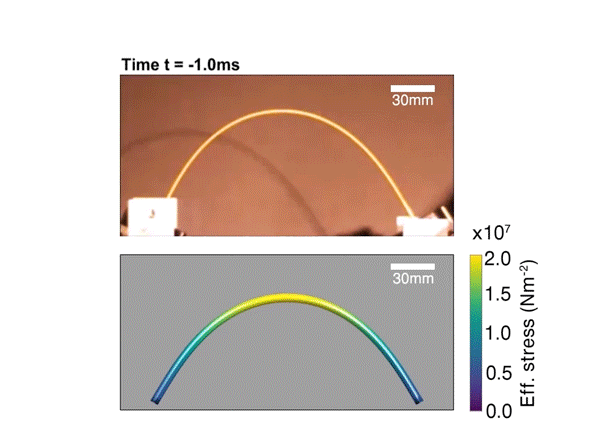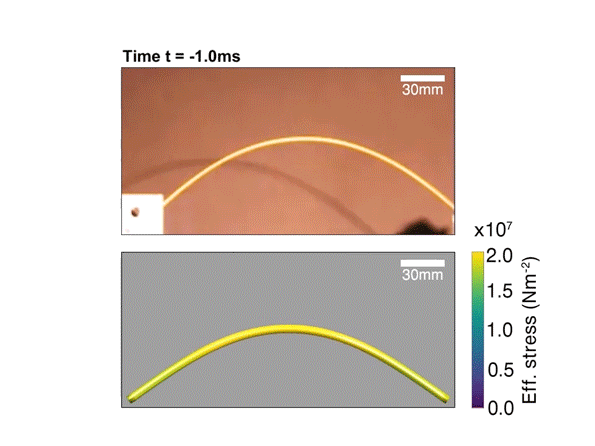It’s a problem that vexxed Nobel prize-winning physicist Richard Feynman, best known for working on the Manhattan Project: Why do dry spaghetti noodles never snap cleaning in two pieces, instead flying everywhere in a bunch of little bits? And how can one make them break cleanly in two?Try it (or don’t, if you don’t feel like vacuuming): if you grab a single strand of dry spaghetti by each end and try to snap it in half, it will always crack into multiple pieces in the middle. If you grab a whole fistful of dry noodles and crack the bundle in half, the same thing happens: A spray of broken middle-pieces fly away from the two handfuls you’re left with. Why don’t they ever just break clean in half?The answer, according to a new MIT study published in the Proceedings of the National Academy of Sciences, is in the torque. By twisting a dry noodle past a certain degree, then slowly bending it in half, it will break cleanly in two—no wasted middle bits.In 2005, French researchers Basile Audoly and Sébastien Neukirch studied the pasta problem. The pair managed to answer why the noodles break the way they do, but not how to break them without shattering. “The sudden relaxation of the curvature at this end leads to a burst of flexural waves,” the wrote in their paper, a theory that helped them win their own Ig Nobel prize. This is where the torque discovery comes in.The MIT researchers developed a mathematical model of the twist-and-bend theory, but they found that you have to twist really hard to do this by hand, so they built a machine to do it for them, with two clamps for either end of the noodles. They demonstrated the imperfect bend approach, and then the mechanical torque method, in two animations based on slow-motion videos:
 These findings aren’t just for kitchen perfectionists and physics nerds, however. They have real-world applications. The researchers hope their findings will help engineers control fractures in things like rod structures and nanotubes.“It will be interesting to see whether and how twist could similarly be used to control the fracture dynamics of two-dimensional and three-dimensional materials,” co-author Jörn Dunkel said in a press release. “In any case, this has been a fun interdisciplinary project started and carried out by two brilliant and persistent students—who probably don’t want to see, break, or eat spaghetti for a while.”Perhaps the bigger mystery here is why people insist on breaking dry pasta in half before cooking it in the first place. I asked Motherboard’s resident Italian and Italian-food expert Lorenzo Franceschi-Bicchierai whether the common American practice of breaking spaghetti in half before cooking it is acceptable in his culture. “Why would you do that,” he said. “Sounds like you need bigger pots in this country.”
These findings aren’t just for kitchen perfectionists and physics nerds, however. They have real-world applications. The researchers hope their findings will help engineers control fractures in things like rod structures and nanotubes.“It will be interesting to see whether and how twist could similarly be used to control the fracture dynamics of two-dimensional and three-dimensional materials,” co-author Jörn Dunkel said in a press release. “In any case, this has been a fun interdisciplinary project started and carried out by two brilliant and persistent students—who probably don’t want to see, break, or eat spaghetti for a while.”Perhaps the bigger mystery here is why people insist on breaking dry pasta in half before cooking it in the first place. I asked Motherboard’s resident Italian and Italian-food expert Lorenzo Franceschi-Bicchierai whether the common American practice of breaking spaghetti in half before cooking it is acceptable in his culture. “Why would you do that,” he said. “Sounds like you need bigger pots in this country.”
Advertisement
